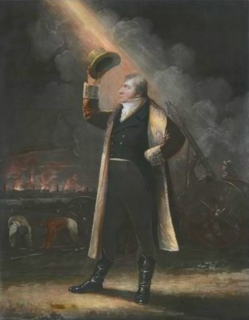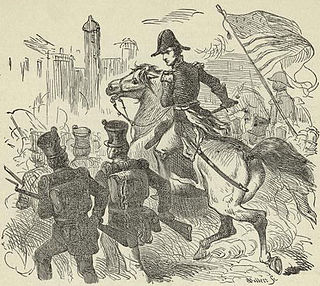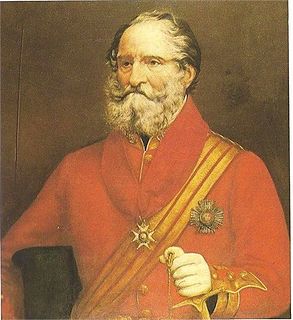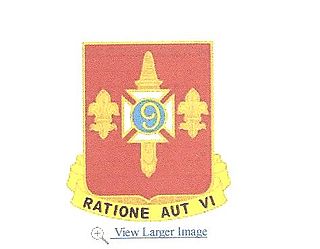The First Battalion
The 1st battalion formed at Plymouth on 29 November 1810 under the command of Major Richard Williams. It consisted of six companies, plus an attached company of Royal Marine Artillery. It embarked, arriving in Lisbon on 8 December 1810.
The battalion grew to eight companies, plus the attached artillery company. It left Portugal in February 1812, and disembarked at Portsmouth. There it remained until 6 June 1812, when it embarked aboard HMS Diadem. The battalion arrived off the coast near Santoña on 15 June, and was involved in the attack on the fort at Castro Urdiales. The fort's garrison of two companies of infantry capitulated on 8 July, the French having evacuated the town the day before. On 10 July, the battalion re-embarked, intending to go to Portugalete, but returned to Castro shortly afterwards. The French, unawares that the marines had returned, launched an unsuccessful counter-attack against the fort's Bilbao gate. Major Williams was appointed commander of the fort on 30 July.
The Royal Navy attacked Santander from 30 July onwards, with the French evacuating the town on 3 August. The first six companies of the 1st battalion embarked for Santander to support the attack and arrived on 4 August. This force re-embarked on 10 August for an intended attack on Gitaya, its destination changing to Portugalete, where it arrived on 12 August. After the marines had destroyed a fort that the French had abandoned, the marines re-embarked and returned to Santander.
The force disembarked at Zumaia on 18 August, along with the 2nd battalion. The artillery companies of both battalions deployed opposite the rock of Gitaya. Both battalions held the area until ordered to re-embark on 20 September.
During October, the 1st battalion was deployed before Santoña, at Castello. The news that a French division was approaching to reinforce the 1,500 men garrison at Santoña led to the recall of the battalion on 1 November. However, the recall was countermanded and the battalion resumed its positions; it returned to Santander on 14 December.
On 21 December the 1st battalion, which numbered 536 rank and file, and its artillery company sailed from Santander in HMS Fox, HMS Latona, and HMS Venerable, arriving at St Helens, Isle of Wight on 31 December. [1] The right wing (aboard Fox and Venerable) received orders to proceed to Plymouth on 6 January 1813, where the battalion was to perform garrison duty at Plymouth and to prepare for imminent deployment to North America.
The 1st Battalion embarked (on the ships Diadem [2] (1st to 5th companies) and Diomede [3] (6th to 8th companies and artillery) on 30 March, set sail on 7 April, and arrived in Bermuda on 29 May 1813. There it and the infantry already present were formed into two brigades. The embarked artillery brigade, supporting both battalions, comprised 131 officers and men, four 6-pounder guns, two 8" howitzers, two 5.5" howitzers, two 10" mortars, and a quantity of Congreve rocket launching frames, with associated munitions, all under the command of Captain Thomas Parke. [4]
On 25 June, the 1st Battalion participated in the attack on Hampton, Virginia. On 13 July, the Marine Battalions were involved in the occupation of Ocracoake and Portsmouth, and engaged in the occupation of Kent Island on 7 August. Later in the year, the 1st Battalion went to Ile aux Noix, south of Montreal in Canada, while the 2nd Battalion went to Prescott, on the Saint Lawrence River.
A detachment of the 1st Battalion, under Lieutenants Caldwell and Barton, was present at the Battle of Lacolle Mills (1814). On 16 August 1814, the battalion received orders to be "disposed for Naval service", with the greater part of the battalion to go to Lake Ontario and the remainder to go to Lake Champlain. In November 1814 the First Battalion was reconstituted in Quebec, and shipped south in support of operations off the coast of Georgia. [5]
The Second Battalion
July 1812 to May 1814
The Second Battalion was formed at Chatham, and deployed to Portsmouth in July 1812. It consisted of six companies under the command of Major James Malcolm. On 15 August, the battalion embarked aboard HMS Latona (1st and 2nd companies) and HMS Fox (3rd to 6th companies), [6] [7] to deploy in Northern Spain under the command of the squadron of Home Riggs Popham. The battalion disembarked at Zumaia on 18 August, and joined up with Spanish forces under the command of Francisco de Longa. The battalion re-embarked on 20 September, and were landed at Santander on 28 September.
Further reinforcements for the battalion disembarked soon after Diadem arrived on 29 November at Santander, [lower-alpha 1] resulting in two companies being added and another company of artillery being formed. [9] Some of the reinforcements had returned from garrison duty on the island of Anholt, Denmark.
On 21 December the 2nd battalion sailed from Santander, along with the left wing of the 1st battalion, aboard Latona, arriving in Cawsand Bay on 4 January. [10] Diadem carried the 1st, 2nd, 7th, 8th & 10th companies, [11] HMS Iris carried the 2nd Battalion's artillery company (Captain Parke) and supplemental company (Captain Wilkinson), [lower-alpha 2] with the remainder of the battalion (5 companies) embarked upon the transports Whitton and Mariner, leaving the town to Spanish forces commanded by General Mendizabal. [lower-alpha 3] The surviving muster lists show the Marines disembarked at Plymouth on 7 January 1813.
The deployment of both battalions in Northern Spain forced the French to redeploy 30,000 men, away from the Salamanca campaign. The Duke of Wellington was so impressed that he requested they would be placed under his command, but was rebuffed by the Admiralty. [4]
Given the heterogeneous nature of the battalion, and its deployment in Spain immediately after inception, Major Malcolm felt that the 2nd Battalion was lacking in discipline. [9] He requested that the 2nd Battalion be deployed to the barracks at Berry Head Fort in Torbay, so that drilling of the unit would result in better discipline and cohesion. The 2nd Battalion was dispatched to Berry Head on 14 January aboard HMS Diadem [11] and HMS Latona, having boarded on 12 January. Within a month of the battalion's arrival in Berry Head Fort, the intensive drill bore fruit. [14]
The 2nd Battalion embarked on the ships HMS Romulus, [15] HMS Diomede, [16] HMS Nemesis, [17] and HMS Fox [18] on 30 March, set sail on 7 April with the ships carrying the 1st Battalion, the transport vessel Mariner [19] [20] (containing two rocket detachments with an establishment of 25 men, each commanded by a Lieutenant) and HMS Superb (which was carrying troops of the 8th Royal Veteran Battalion) and arrived in Bermuda on 29 May, where the Marines and the Royal Veterans, with the two Independent Companies of Foreigners already present upon the island, were formed into two brigades.
The 2nd Battalion was employed alongside the 1st Battalion until late in 1813, when the 2nd Battalion was deployed to Prescott, on the Saint Lawrence River. On 6 May 1814, it participated in the Battle of Fort Oswego (1814), suffering fatalities of one Captain, two Sergeants and four Other Ranks. [21] Its final engagement was the Battle of Big Sandy Creek, where an element of the battalion made up part of the 180-man force. Thereafter, the battalion's companies were broken up and its men were dispersed among the squadron and flotilla on Lake Ontario, as per orders from Commodore James Lucas Yeo.
From May 1814
Following the order, the 2nd Battalion ceased to exist as a fighting force. All that remained were the staff elements. When the 3rd Battalion arrived in Chesapeake, they were renumbered as the 2nd Battalion and came under Malcolm. Upon the orders of Vice Admiral Sir Alexander Cochrane, three of the ten companies were detached from this unit, to become the regenerated 3rd Battalion, under the command of Major Lewis. (These three companies were commanded by Captain Clements, Lt Connolly and Lt Stevens. [22] )
The recreated 2nd Battalion was present in the Chesapeake campaign, participating in the Battle of Bladensburg, the attack on Washington, and the Battle of Baltimore. Also present during the campaign were the three companies of the Corps of Colonial Marines under the command of an army officer, Captain Reed (of the 6th West India Regiment), and a composite battalion of Marines, formed from ships' Marine detachments, frequently led by Captain John Robyns. A composite "battalion" of 100 men also took part in the Battle of New Orleans, under the command of Brevet Major Thomas Adair. [23]
Following the failure of the British attack against Fort McHenry on 13 September, the 2nd and 3rd Marine battalions proceeded to Tangier Island, where a barracks for 600 men was created on the understanding they would be spending the winter on the island.
Orders were received on 11 December to embark, the Marines later disembarking on Cumberland Island on 10 January 1815, along with the 1st Battalion and two companies of the 2nd West India Regiment. Thereafter, this force attacked Fort Peter on 13 January, subsequently marching on the town of St. Marys, and occupying it for about a week, before retiring to Cumberland Island.
It is understood that an element of the 2nd Battalion could have participated in the Battle of New Orleans. The musters show three dead men (from the First and Third companies commanded by Captain Coles & Lieutenant Fynmore respectively) and several men wounded. [24]
Ironically, the battalion's final action was a purely artillery engagement. The battalion's rocket detachment, commanded by Lieutenant John Lawrence, were on HMS Tonnant, and were put ashore on 7 February 1815, to participate in the attack on Fort Bowyer. (Their penultimate engagement was the Battle of New Orleans. [25] ) Thereafter they returned to Portsmouth and were disembarked on 11 May 1815. The infantry companies were embarked aboard HMS Albion for the return to England in 1815. The artillery company was disembarked at Chatham on 20 May 1815.
The Third Battalion
December 1813 to August 1814
After Napoleon's defeat at Leipzig in October 1813, the French troops retreated to France. A provisional government was formed, the Triumvirate of 1813, which invited the exiled Prince William VI of Orange to The Hague.
A token British force accompanied the Prince of Orange to the Netherlands in November 1813. Most of the British army was fighting the Peninsular War, so the 2nd Battalion 2nd Foot Guards [26] and several companies of Marines [27] were hastily embarked at Deal. These companies were to form the nucleus of the 3rd Battalion. A further two companies of Marines arrived on 19 December, accompanied by Major George Lewis, who assumed command of the Marines.
This force was involved in fighting around Krabbendijke, until Russian troops relieved them on 18 January. When the marines arrived in Portsmouth on 21 January, they were formed into the Third Battalion. The battalion had an establishment of ten companies of 100 men, and one company of Royal Marine Artillery. The battalion was commanded by Major George Lewis, who since 19 December 1813 had been the officer commanding the Marine companies deployed in the Netherlands.
The Artillery company were issued with knapsacks just prior to their departure. [28] The battalion embarked on 29 March, set sail on 7 April, and disembarked at Bermuda. The infantry companies were aboard HMS Regulus, HMS Melpomene and HMS Brune, with the artillery aboard HMS Tonnant. [29] After a sojourn, the battalion sailed for the Chesapeake on 30 June, and joined Admiral Cockburn's squadron on 16 July. Just prior to the liaison, a detachment of 12 Royal Marine gunners (with two howitzers and a field piece) and 100 Royal Marine infantry [30] [31] were transferred to HMS Hermes and HMS Carron, to accompany Brevet Lieutenant Colonel Edward Nicolls to Florida, [32] where they would remain for the duration of the war.
On the morning of 19 July, the battalion landed near Leonardtown and advanced in concert with ships of the squadron, causing the US forces to withdraw. The battalion was deployed to the south of the Potomac, moving down to Nomini. The battalion was subsequently landed at St Clements Bay on 23 July, Machodoc creek on 26 July, and Chaptico, Maryland on 30 July.
The first week of August was spent raiding the entrance to the Yeocomico River, which concluded with the capture of four schooners at the town of Kinsale, Virginia. On 7 August, the battalion stormed a gun battery of three artillery pieces, situated on the Coan River (a few miles below the Yaocomico river).
During the Chesapeake campaign the 3rd Battalion participated in the Battle of Bladensburg, the attack on Washington, and the Battle of Baltimore. The attack on Washington cost the Navy one man killed and six wounded. [33] [34]
After Lieutenant Colonel James Malcolm arrived, the battalion was split into the reconstituted second battalion, and the third battalion (composed of Royal and Colonial Marines), as outlined below.
From September 1814 to 1815
Cochrane ordered that three of the 10 companies from this unit become the nucleus of a regenerated 3rd Battalion, under the command of Major Lewis. These three companies joined the three companies of the Corps of Colonial Marines, formed in May of that year, to make a new 3rd Battalion Royal and Colonial Marines. The Colonial Marines had made their combat debut on the raid on Pungoteague Creek (30 May 1814), [35] with one fatal casualty, and had then carried out incursions at Chesconessex Creek in June and Onancock in August and were involved in the Washington campaign with one man killed and three wounded. [33] Prior to the establishment of the Corps, some of its men had been employed to good effect as scouts and guides with raiding parties. [36]
The 3rd Battalion subsequently deployed to Cumberland Island along with the 1st and 2nd Battalions. When news reached the troops that peace had been made, the 3rd Battalion embarked on 10 March, disembarking on Ireland Island, Bermuda, on 21 March. The battalion's several Colonial companies were renamed the 3rd Battalion Colonial Marines and, after 16 months of garrison duty in the new Royal Naval Dockyard, were settled on new lands in Trinidad on 20 August 1816, forming the community of "the Merikens" in the areas known since then as the "Company Villages". The three remaining Royal Marine companies of the original 3rd Battalion departed Bermuda in May 1815 to return to England.

The Congreve rocket was a type of rocket artillery designed by British inventor Sir William Congreve in 1808. The design was based upon the rockets deployed by the Kingdom of Mysore against the East India Company during the Second, Third, and Fourth Anglo-Mysore Wars. Lieutenant general Thomas Desaguliers, colonel commandant of the Royal Artillery at Woolwich, was impressed by reports of their effectiveness, and undertook several unsuccessful experiments to produce his own rocket weapons. Several captured Mysorean rockets were sent to England following the annexation of the Mysorean kingdom into British India following the death of Tipu Sultan in the siege of Seringapatam.

The Battle of North Point was fought on September 12, 1814, between General John Stricker's Maryland Militia and a British force led by Major General Robert Ross. Although the Americans retreated, they were able to do so in good order having inflicted significant casualties on the British, killing one of the commanders of the invading force, significantly demoralizing the troops under his command and leaving some of his units lost among woods and swampy creeks, with others in confusion. This combination prompted British colonel Arthur Brooke to delay his advance against Baltimore, buying valuable time to properly prepare for the defense of the city as Stricker retreated back to the main defenses to bolster the existing force. The engagement was a part of the larger Battle of Baltimore, an American victory in the War of 1812.

The Corps of Colonial Marines were two different British Marine units raised from former black slaves for service in the Americas, at the behest of Alexander Cochrane. The units were created at two separate periods: 1808-1810 during the Napoleonic Wars; and then again during the War of 1812; both units being disbanded once the military threat had passed. Apart from being created in each case by Cochrane, they had no connection with each other.

The Battle of Pensacola was a battle of the Creek War during the War of 1812, in which American forces fought against forces from the kingdoms of Britain and Spain who were aided by the Creek Indians and African-American slaves allied with the British. General Andrew Jackson led his infantry against British and Spanish forces controlling the city of Pensacola in Spanish Florida. Allied forces abandoned the city, and the remaining Spanish forces surrendered to Jackson.
HMS Heron was originally the merchant vessel Jason, launched at Newcastle in 1803, that the Admiralty purchased in 1804 for the Royal Navy for use as 16-gun ship-sloop under the name HMS Heron. During the Napoleonic Wars she served as a convoy escort on the Leeward Islands station. Then in 1810 the Admiralty had her converted into a bomb vessel and renamed her HMS Volcano. As Volcano she served during the War of 1812, and in particular participated in the Battle of Baltimore. The Admiralty sold her in 1816. New owners returned her to mercantile service under her original name of Jason. She was wrecked in 1821.
The 198th Signal Battalion is an Expeditionary Signal Battalion in the Delaware Army National Guard. Delaware is known as the "First State," as referenced in their motto "First Regiment of First State." The unit specializes in command post node communications, providing broadband satellite voice and data connections for brigade sized battlefield elements. The unit includes Headquarters, Headquarters Company located in Wilmington, DE; A Company in Georgetown, DE; B Company in Hodges, SC; and C Company in Wilmington, DE. It is one of several National Guard units with colonial roots and campaign credit for the War of 1812.

HMS Royal Oak was a 74-gun third rate ship of the line of the Royal Navy, launched on 4 March 1809 at Dudman's yard at Deptford Wharf. Her first commanding officer was Captain Pulteney Malcolm.

HMS Vengeur was a 74-gun third rate Vengeur-class ship of the line of the Royal Navy, launched on 19 June 1810 at Harwich. She had an uneventful career, having participated in no battles or engagements.

HMS Asia was a 74-gun third-rate ship of the line of the Royal Navy, launched on 2 December 1811 at Frindsbury.
The 58th (Rutlandshire) Regiment of Foot was a British Army line infantry regiment, raised in 1755. Under the Childers Reforms it amalgamated with the 48th (Northamptonshire) Regiment of Foot to form the Northamptonshire Regiment in 1881.
The 85th Regiment of Foot was a British Army line infantry regiment, raised in 1793. Under the Childers Reforms it amalgamated with the 53rd (Shropshire) Regiment of Foot to form the King's Shropshire Light Infantry in 1881.
Fort Bowyer was a short-lived earthen and stockade fortification that the United States Army erected in 1813 on Mobile Point, near the mouth of Mobile Bay in what is now Baldwin County, Alabama, but then was part of the Mississippi Territory. The British twice attacked the fort during the War of 1812.
HMS Cydnus was one of eight Royal Navy 38-gun Cydnus-class fifth-rates. This frigate was built in 1813 at Blackwall Yard, London, and broken up in 1816.

Sir Edward Nicolls was an Anglo-Irish officer of the Royal Marines. Known as "Fighting Nicolls", he had a distinguished military career. According to his obituary in The Times, he was "in no fewer than 107 actions, in various parts of the world", and had "his left leg broken and his right leg severely injured, was shot through the body and right arm, had received a severe sabre cut in the head, was bayoneted in the chest, and had lost the sight of an eye."
Lieutenant General George Lewis CB was a career officer in the Royal Marines, active during the Napoleonic Wars and the War of 1812. He rose to the rank of lieutenant general and served as Colonel Commandant of the Royal Marines, Portsmouth Division.
Twenty-four current units of the Army National Guard perpetuate the lineages of militia units mustered into federal service during the War of 1812. Militia units from nine states that were part of the Union by the end of the War of 1812, plus the District of Columbia, are the predecessors of eighteen units that currently exist in the Army National Guard. Two of the four units derived from Virginia militias are in the West Virginia National Guard; at the time of the War of 1812, West Virginia was still part of Virginia. Only two current units, the 155th Infantry, a component of the Mississippi National Guard derived from militia units organized in the Mississippi Territory and the 130th Infantry, a component of the Illinois National Guard derived from militia units formed in the Illinois Territory, are from states or territories west of the Appalachians. Unfortunately, no militia units from the states of Kentucky, Louisiana, Ohio or Tennessee, or from the Indiana, Michigan, Missouri or Louisiana Territories, where militia units played a major role in the fighting, have survived as units in the modern Army National Guard.
Twenty-three currently active battalions of the Regular Army earned credit for campaigns during the War of 1812: two Air Defense Artillery battalions, six Field Artillery Battalions and seventeen Infantry battalions. These twenty-three battalions represent two Air Defense Artillery, four Field Artillery and seven Infantry regiments. Three additional Air Defense Artillery regiments have been awarded shared credit for War of 1812 campaigns, but the lineages of the artillery companies that earned those credits have not been perpetuated by currently active battalions.
Henry Noble Shipton was a British junior officer who served in the Royal Marines and the Army. He is notable as being the sole Royal Marine to have fought at the Battle of Waterloo.

HMS Carron was a 20-gun Cyrus-class sixth-rate post ship of the Royal Navy built in 1813 by Edward Adams, at Bucklers Hard in Hampshire. She was wrecked in 1820.

The 244th Air Defense Artillery Regiment is an air defense artillery regiment of the United States Army first formed on June 24, 1799 as the 6th Regiment of Infantry (NYNG).









